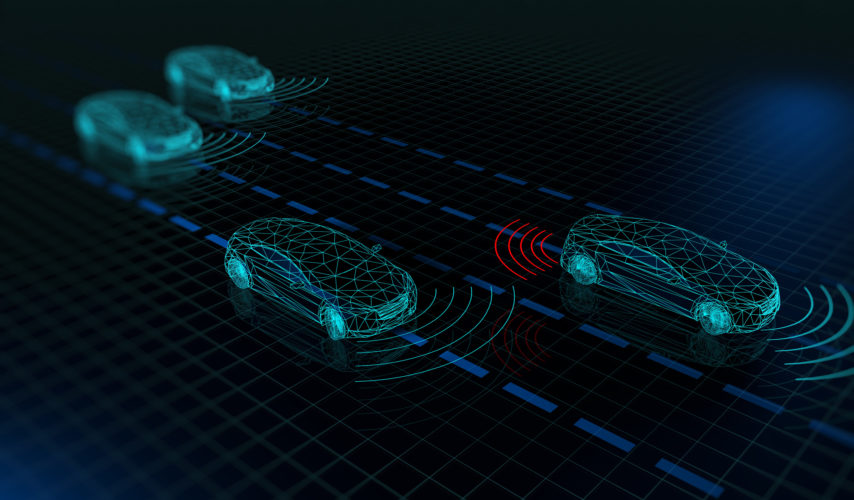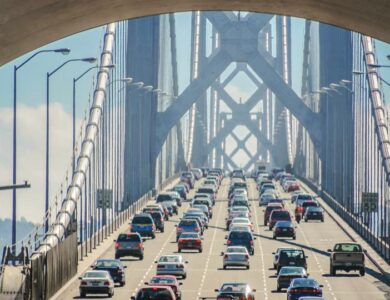Fully Autonomous Vehicles Hit the Streets: Robert Rabin of Stanford University on Risks and Evolving Liability Issues – Legal bundling

[ad_1]
The California Public Utilities Commission recently approved petitions from two taxi companies, Waymo and Cruise, to operate 24-hour robo-taxi services in San Francisco. The first of its kind is widely seen as a major step forward for fully autonomous vehicles and a stepping stone to rolling out similar driverless cars in other cities.
Supporters say that self-driving taxis are safer and more reliable than manned vehicles, and will bring many safety, environmental and social benefits to communities. Meanwhile, news reports of robot taxis intercepting emergency vehicles, getting stuck in cement, and wreaking havoc on city streets support the arguments of opponents, who say the technology is not ready for widespread use — and that it will take its toll. jobs and have other harmful effects on society.

As San Francisco and other cities grapple with the pros and cons of this new age in transportation, legal scholars such as Stanford Law School Robert RabinProfessor of Law at A. Calder-McKay focuses on the tort system and how it will evolve to compensate victims of self-driving vehicle accidents.
Here, Rabin discusses the ultimate tendency toward more product liability claims and fewer negligence claims, the new liability framework he proposed in 2018, as well as other tort law issues related to fully autonomous vehicles.
If driver negligence is the leading cause of motor vehicle liability cases now, and human driver negligence should eventually become a much smaller piece of the liability pie, how does the law evolve to compensate people who have been injured or suffered property damage due to autonomous vehicles?
While driver negligence is the basis of liability in the vast majority of car accident cases, the much smaller number of product defect claims against car manufacturers receive the lion’s share of the media attention. Therefore, accident claims would be much lower on a road dominated by autonomous vehicles, and a much higher proportion of product defect claims. Technical risk/facilities issues will have a higher priority than garden variety issues that require due diligence. However, one must bear in mind that we are looking forward to a relatively distant future. I expect that conventional vehicles will remain prominent on the roads for many years to come.
With software and other technologies increasingly in the “driver’s seat”, would it be easier to assign responsibility for car accidents simply by looking at the data or recordings?
On the contrary, it would be difficult to say “what went wrong”, if anything, when the problem is whether there is a reasonable alternative design (RAD) for the software system. rad is What is currently used in the damage system to assess design defects. The Claimant shall prove that a feasible and reasonable alternative design existed and the adoption of which could have minimized or prevented the damage. This would be a very technical question. Moreover, there is a greater complexity generated by the phenomenon of machine learning, i.e. automatic updates in the system that have been used, or may have been used. Judges and juries are not well equipped to assess this type of case.
In 2018, I co-authored a legal review article arguing for an entirely new liability framework once autonomous vehicles become the dominant mode of transportation on our streets. Can you sum it up?
in Motor Vehicles and Manufacturers’ Liability for Accidents: A New Legal Regime for a New Era, which I co-authored with Kenneth Abraham at the University of Virginia, we propose replacing tort remedy with a no-fault system, akin to the workers’ compensation model. The transportation revolution will require new ways of thinking about how to compensate victims, just as the Industrial Revolution heralded a new era in how to compensate victims of work accidents. Our arguments remain theoretical for the time being, as such a system should only come into play when a significant proportion of the vehicles on the roads become self-driving.

The idea stems largely from the difficulty of identifying product defects in accidents associated with self-driving vehicles. Because the contributions of drivers and other third parties to these accidents will be negligible, the focus will be on alleged highly complex engineering faults, as you mentioned. At this point, RAD, which is currently used in the damage system to assess design defects, is likely to become unhelpful. Our idea was to replace tort with Manufacturer’s Liability (MER), a consolidated federal program that would be a manufacturer-funded, strict-liability bodily injury compensation scheme, run by a fund created through valuations imposed on HAV manufacturers.
Are regulators moving too quickly in terms of approving fully self-driving cars, and is the current legal framework sufficient to deal with the liability issues at hand?
We live in a culture where technology is inextricably intertwined with political considerations. We can confidently expect that a relatively small number of AV accidents causing serious personal injury and/or significant traffic interference will result in a relatively hasty rollback by regulators, or perhaps a rollback initiated by the technology companies themselves.
In terms of liability issues and how they might evolve, is there a significant difference between cars in autonomous driving mode (with a person in the traditional driver’s seat) and those that are fully autonomous?
This is a middle course between self-driving cars and conventional vehicles. In this hybrid category, one would expect a large number of cases to continue to rely on the traditional theory of negligence, claiming inattention on the part of the ‘driver’.
You have had a longstanding scholarly interest in historical and doctrinal developments in tort law, particularly in the field of health and safety. Can you comment on this interest in general and explain why this is such an exciting time for you?
The dynamics of the injury law have been particularly intrigued to me. I’ve seen the limits of tort law (and alternative compensation schemes) tested by tobacco disease, mass disasters (like 9/11), asbestos, opioids, and now, perhaps, the mass transit revolution. Makes life interesting for damage enthusiasts.
Enjoy Robert L. Rabin, an expert in legislative torts and compensation plans, is highly regarded for his extensive knowledge of the history and institutional dynamics of accident law. He is a prolific author on cases relating to tort system functions and alternative organizational schemes, and is the co-editor of the classic casebook on tort law. He has served as a consultant on the American Law Institute’s (3rd) Restatement of Torts (2012) and the Product Liability (1998) Restatement of the Product (1998) Law. He was also director of the Robert Wood Johnson Foundation’s Tobacco Policy Research and Evaluation Program, as well as co-reporter of the American Law Institute’s Project on Compensation and Liability for Product and Operational Injuries, and a reporter for the American Bar Association. Work Committee to improve the system of liability for damage. He has been on the faculty of Stanford Law School since 1970.
[ad_2]
Source link




